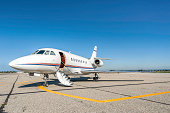
eleanorerey454
About eleanorerey454
The Rise of Private Jets: A Case Examine on Luxury Travel And Its Implications
The private jet trade has skilled remarkable development over the previous two a long time, remodeling the way affluent individuals and businesses approach travel. This case study explores the evolution, advantages, and challenges of private jet travel, analyzing its influence on the luxurious market, the atmosphere, and the way forward for aviation.
Historic Context
The concept of private air travel can be traced back to the early 20th century, but it wasn’t till the publish-World Battle II era that the industry began to take form. The introduction of business jets in the 1960s, such as the Learjet 23, marked a major turning level, permitting firms and rich people to bypass industrial airline schedules and enjoy the convenience of flying on their very own terms. The deregulation of the airline business within the late 1970s further propelled the growth of private aviation, making it more accessible to a broader vary of clients.

Market Development
Lately, the private jet market has expanded dramatically, fueled by increasing world wealth and a growing demand for personalised journey experiences. In keeping with the Federal Aviation Administration (FAA), the variety of private jets within the United States alone has surpassed 22,000, with a steady annual development rate of roughly 3% over the past decade. The rise of charter companies and fractional possession fashions has additionally democratized entry to private jets, allowing those who might not be capable to afford outright ownership to enjoy the benefits of private air travel.
Advantages of Private Jet Travel
- Time Effectivity: One of many most important benefits of private jet travel is the time saved. Passengers can keep away from long security traces, flight delays, and layovers associated with commercial flights. Private jets can entry 1000’s of airports worldwide, including smaller regional airports, allowing travelers to achieve their locations more quickly.
- Flexibility and Convenience: Private jets offer unparalleled flexibility in scheduling. Here is more info in regards to private jet charter broker (they said) have a look at the page. Travelers can select their departure instances and routes, accommodating last-minute adjustments and preferences. This degree of comfort is particularly helpful for enterprise executives who need to maximise productivity.
- Privateness and Comfort: Private jets provide a degree of privateness that commercial flights can’t match. Passengers can conduct confidential conferences, loosen up in a cushty setting, and take pleasure in customized services tailored to their preferences. The luxurious interiors of private jets usually characteristic spacious cabins, gourmet catering, and excessive-finish amenities.
- Enhanced Safety: In the wake of the COVID-19 pandemic, many travelers have turned to private jets as a safer alternative to commercial aviation. Private jets reduce exposure to giant crowds and permit for controlled environments, addressing well being considerations related to air journey.
The Environmental Impression
Despite the numerous advantages, the rise of private jets has raised considerations concerning their environmental impact. Private jets emit considerably extra carbon dioxide per passenger compared to commercial flights, contributing to local weather change. According to a report by the Worldwide Council on Clear Transportation, private jets produce about 14 times extra emissions per passenger mile than commercial airlines.
In response to growing environmental awareness, the private aviation trade is exploring sustainable options. Companies are investing in more gasoline-environment friendly aircraft, sustainable aviation fuels (SAF), and electric or hybrid propulsion methods. Initiatives just like the ”Fly Green” program aim to offset carbon emissions via investments in renewable power initiatives and reforestation efforts.
The Luxury Market and Private Jets
Private jets have become a symbol of wealth and status, interesting to high-web-price individuals, celebrities, and corporate executives. The luxury travel market has seen a shift towards experiential offerings, with private jet travel being a key component. Corporations such as NetJets, VistaJet, and Wheels Up have capitalized on this trend, providing bespoke journey experiences that cater to the needs of affluent shoppers.
The rise of ”jet cards” and fractional possession has made private aviation more accessible, allowing purchasers to buy flight hours without the commitment of full ownership. This model has attracted a brand new era of travelers who seek the convenience of private air travel with out the associated costs of maintaining an aircraft.
Challenges Facing the Trade
Regardless of its growth, the private jet trade faces several challenges. Regulatory hurdles, security issues, and fluctuating fuel prices can impact operations and profitability. Moreover, the trade must navigate the stability between luxury and sustainability, addressing the environmental considerations related to private aviation.
The COVID-19 pandemic has additionally launched new challenges, as journey restrictions and well being protocols have altered the panorama of air travel. Whereas private jets have seen elevated demand as a safer choice, the industry should adapt to changing client preferences and expectations.
The way forward for Private Aviation
Looking ahead, the future of private aviation appears promising however requires adaptation to rising tendencies. The combination of expertise, similar to advanced booking platforms and in-flight connectivity, will enhance the customer experience. Furthermore, the industry should continue to prioritize sustainability, investing in progressive solutions to scale back its carbon footprint.
Because the world turns into more and more interconnected, private jet travel will possible stay an important component of the luxury journey market. The trade’s capacity to innovate and tackle environmental considerations will determine its lengthy-time period viability and acceptance amongst a broader audience.
Conclusion
The private jet trade has developed into a major player within the luxury travel market, providing unparalleled comfort, flexibility, and consolation to its clientele. Nonetheless, it should confront urgent challenges associated to sustainability and public notion. As affluent travelers seek personalized experiences, the private aviation sector might want to adapt and innovate to satisfy the demands of the future whereas minimizing its environmental influence. The journey of private jets is a testomony to the intersection of luxurious, know-how, and sustainability, shaping the way forward for air journey for generations to return.
No listing found.
